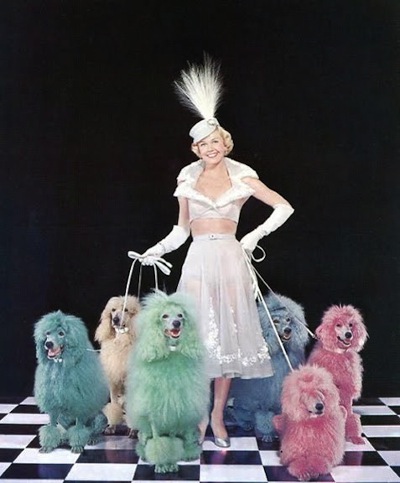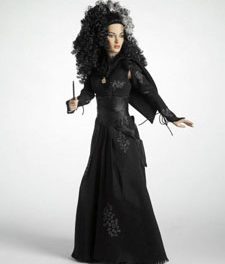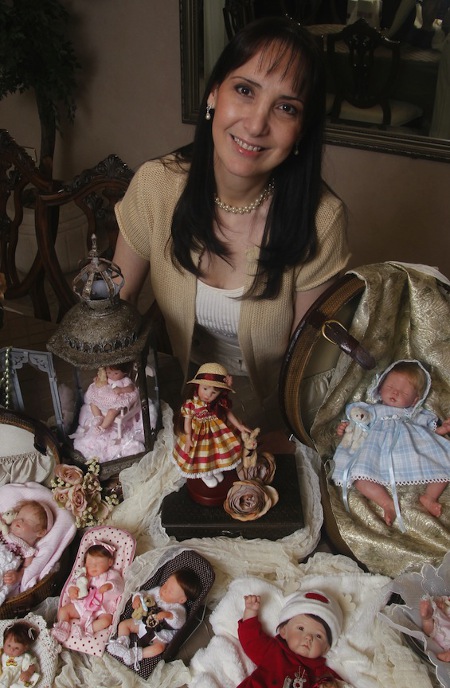Photo courtesy of Collier’s Magazine/John Florea Photography, 1952
When Doris Day released a portrait photo of her and her dog to celebrate her 92nd birthday April 3, the Internet was enthralled. Doris has been retired from show business for 40-plus years, but she’s remained a celebrity because of her tireless commitment to animal welfare and rescue. I wrote about Ms. Day’s connection to critters in this week’s “The Plush Life” blog, and showed off some of the teddy bears and other creatures that have been made to honor her. So naturally, that got me to thinking about her association with dolls — which, frankly, should be going through the roof about now! I mean, come on, a woman who could confidently hold the leashes on six rainbow-colored poodles deserves to have line of dolls celebrating her verve and nerve.
If you Google photos of Doris Day, you will be swooning by the time you reach page 100! The woman was a costumer’s dream, and she showed off her pert figure and comely legs in movie roles, television parts, album covers, and even print ads. Doris Day was (and is) extremely photogenic, and her healthy complexion and corn-colored hair made her the symbol of all-American wholesomeness. That placement of Doris on a celluloid pedestal both fueled her success, but also put the brakes on many opportunities that would have gone against her publicity and her studio-manufactured image.
The pianist, comedic actor, and author Oscar Levant once wisecracked: “I knew Doris Day BEFORE she was a virgin.” And that one-liner beautifully sums up what Doris became when she headed to Hollywood. Born Doris Mary Ann Kappelhoff in 1924, she was already traveling across the country as a big band singer in 1939. Only 15 years old, Doris lied about her age, claiming to be 17. She played bars, nightclubs, second-rate radio stations, and kept on crooning until she eventually had an enormous hit record in 1945 with “Sentimental Journey.” A veteran and a shrewd businesswoman by then, Doris was all of 21 years old!
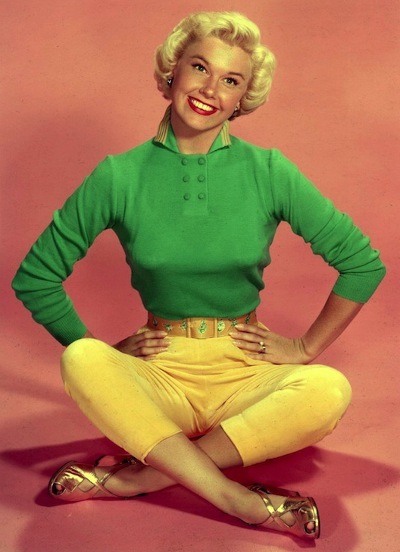
(Photo courtesy of Photoplay magazine)
In 1945, she was also a divorcée, having married at 17 and then waved bye-bye to her husband when she was 19. Doris Day knew what she wanted, and she knew how to get there. In 1946, when she was 22, she married for the second time, and this would be the second of her four marriages. Determined and very talented, Doris was destined to be on the screen. Her luminous looks absolutely shone on the silver screen, and her rise to leading lady happened pretty quickly. Because she appeared so much the embodiment of the “girl next door,” she almost always played the part of an innocent young woman who would patiently wait until her male co-star was ready to settle down. He would sow his wild oats, and then come galloping back to her. She would serenely wait, knowing that goodness always triumphs in the end.
However, while she often played these girls who would offer a single kiss good night — and nothing more — she also began to cultivate parts that allowed her to play self-supporting, business-motivated, talented, and ethical bachelorettes. Her characters would not bed her suitors until she was wed, and that grittiness was celebrated by Beyoncé and her backup dancers 50 years later in “Put a Ring on It.”
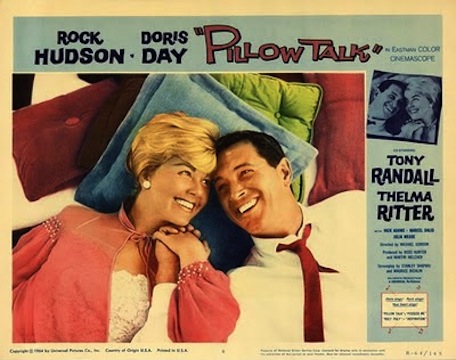
Doris was no fool in her romantic comedies. Partnered with James Garner or Rock Hudson, Doris is always their equal and more. Her pairing with Rock Hudson is the stuff of screen legends, and even inspired a vinyl version from Mattel. Of course, one of the reasons why the two flirt and work so well together is because they are both pretending to be characters that have absolutely no connection to their true identities. As we all know now, Rock was not the skirt-chasing womanizer who needed to be tamed, and Doris was not the beacon of purity who stood like a chaste lighthouse beckoning him to her bedroom . . . after he put a ring on it, of course!
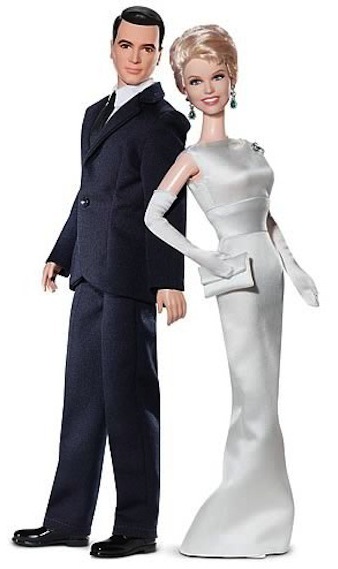
(Photo courtesy of Mattel)
I think that’s why Doris would be such a great doll. One of the hallmarks of doll collecting is the ability to lose one’s self in the accumulating of costumes, fashions, accessories, and articles of clothing that make your doll into something extraordinary and unique. For some people, it’s a matter of self-expression. For others, it is pure wish fulfillment. Doris’s roles were multilayered performances where she acted out what post–World War II men expected from the girls they married — devotion, loyalty, purity, optimism, patriotism. But she also showed us what these girls were growing up to be and desiring to achieve: her characters lived in their own gorgeously decorated Manhattan apartments, drove adorable sports cars, went on dates with dashing ad executives, and had an active single life before settling down in marriage. Doris’s swanky flats were so meticulously art-directed that her lamps, clocks, armchairs, and phones even matched her evening gowns!
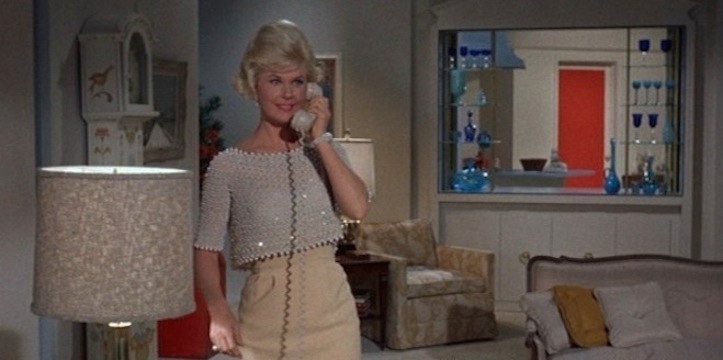
(Photo: UIP/Universal International Pictures)
Doris Day’s acting career was about 26 years long: from 1948 in the movies to a guest-star appearance on TV in 1974. In that length of time, she reigned over the box office, won tons of awards from the press and movie-magazine readers (but never the elusive Oscar or Emmy from her peers), and continued to record jazz and American songbook standards albums. She was pretty much a renaissance woman who had been fated to perennially play a sunshiny, cheerful girl.
Doll artists who are always looking for a “backstory” these days can simply follow her real-life climb to the top, her ascension to superstardom, the deals and strings she pulled to stay there, and then her defiant decision to walk away from it all. Doris bid farewell to acting and singing and public performances to concentrate on the animals that she loved.
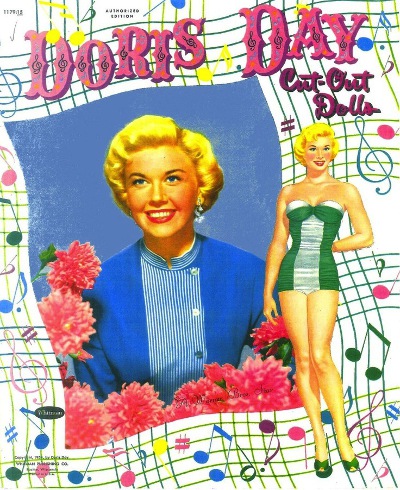
(Photo courtesy of Whitman)
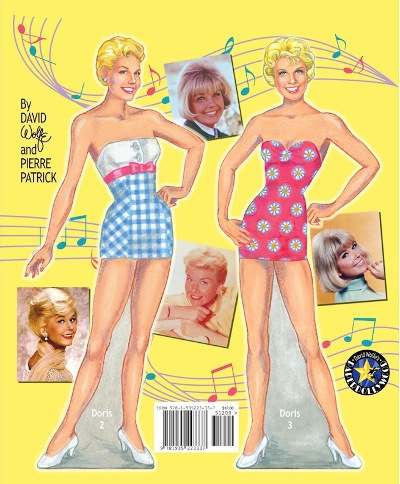
(Photo: David Wolfe and Pierre Patrick)
To me, this is a doll that is just clamoring to be made. Yes, there have been a ton of paper doll books created that honor her many film roles. Her outfits, after all, are Technicolor eye candy. But I think her knock-em-dead styles are ideal for fashion dolls that have a retro or déjà vu feel, don’t you?
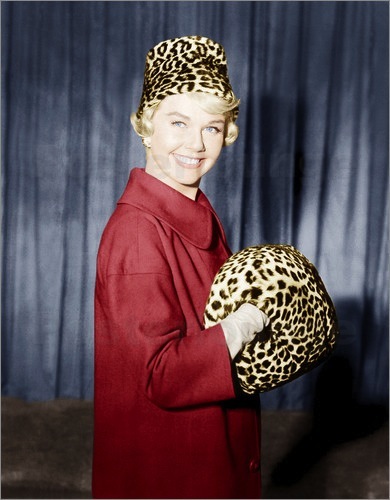
(Photo: UIP/Universal International Pictures/Costume Test Bonus Material)
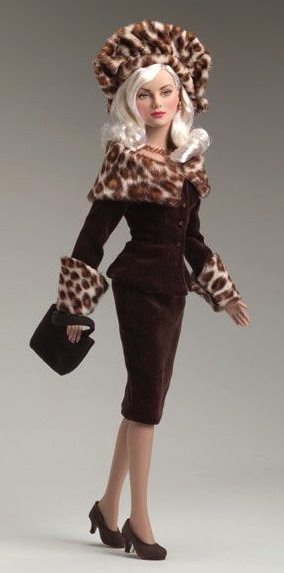
(Daphne Dimples – Photo courtesy of Effanbee/Tonner Dolls)
I don’t know whether such fabled doll designers as Mel Odom, Robert Tonner, Jason Wu, or Robert Best — to name just a few — were influenced by Doris’s flair and figure, but I definitely can see an homage and a couple of hints in their many nostalgic ensembles. Let’s hope that some enterprising doll maker or manufacturer creates a line of dolls that commemorates Doris’s incomparable life and sartorial times. And, to assist in her lifelong passion for rescuing and tending to our four-legged friends, proceeds from sales can help feather her self-named animal-charity organizations. Now, that would put a smile on Doris Day’s dimpled face for sure!

